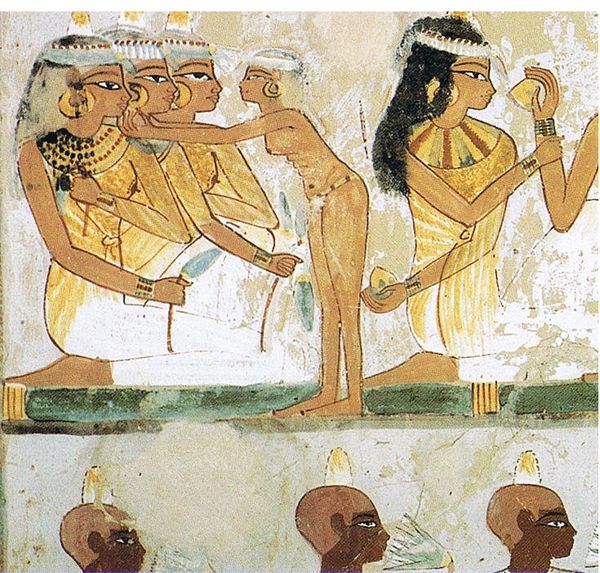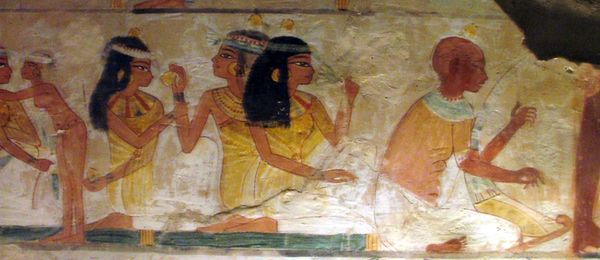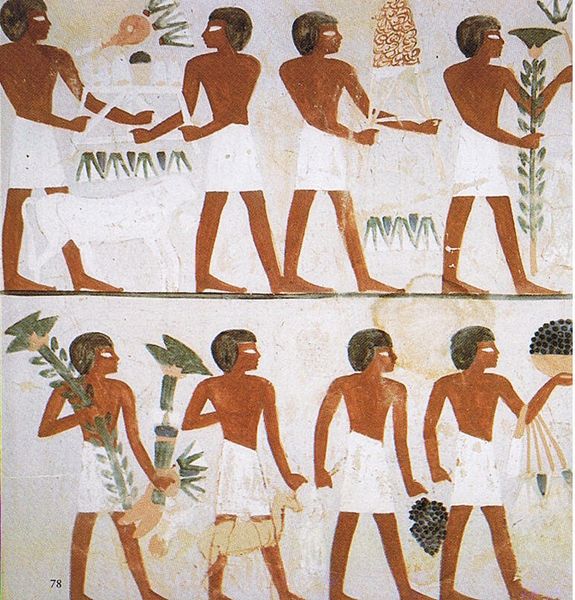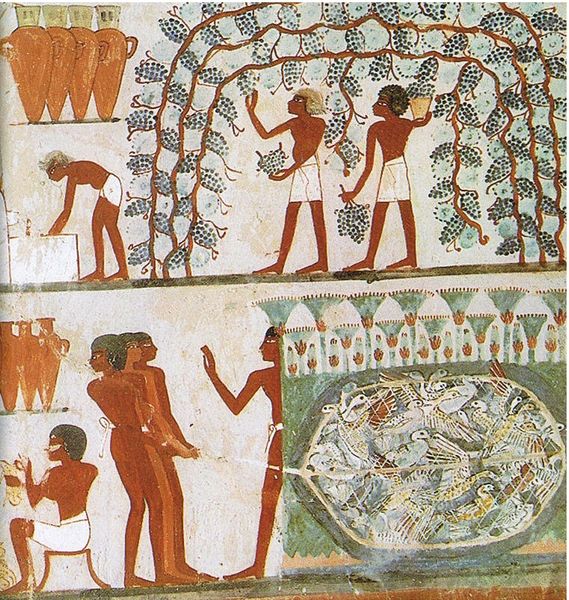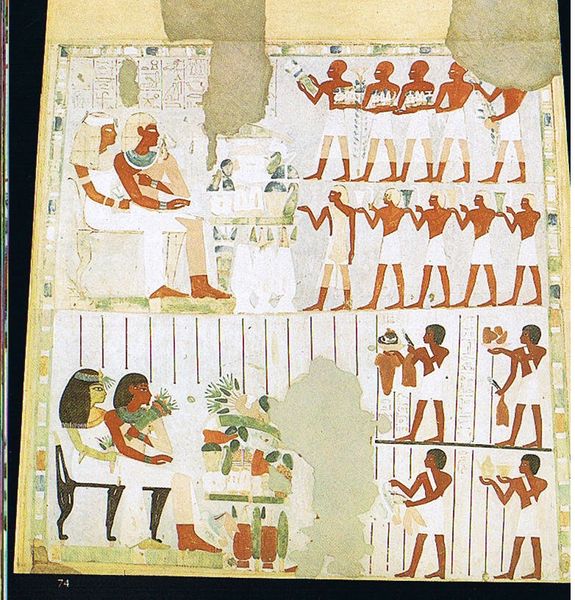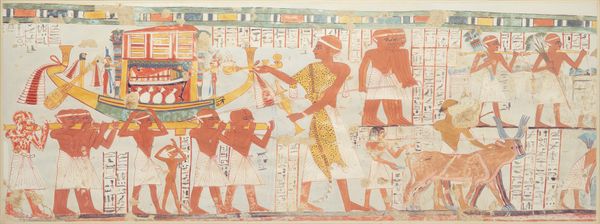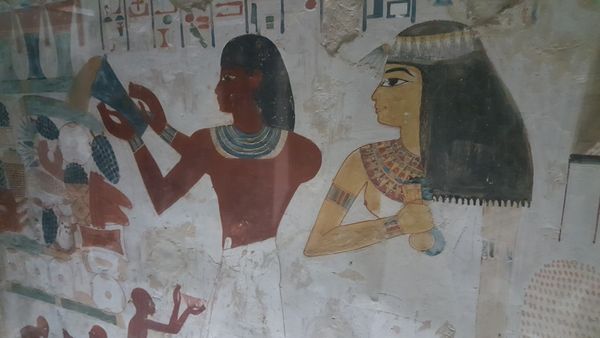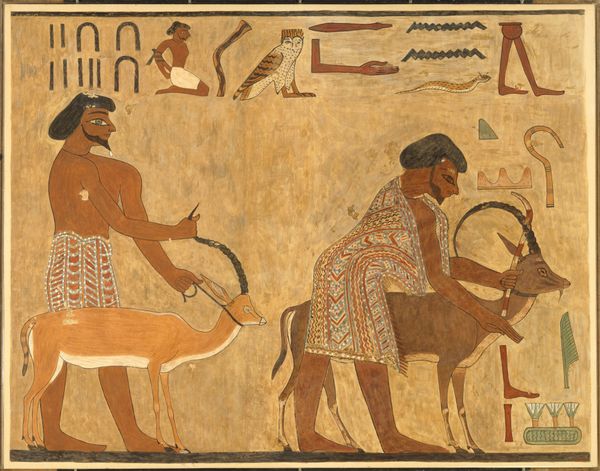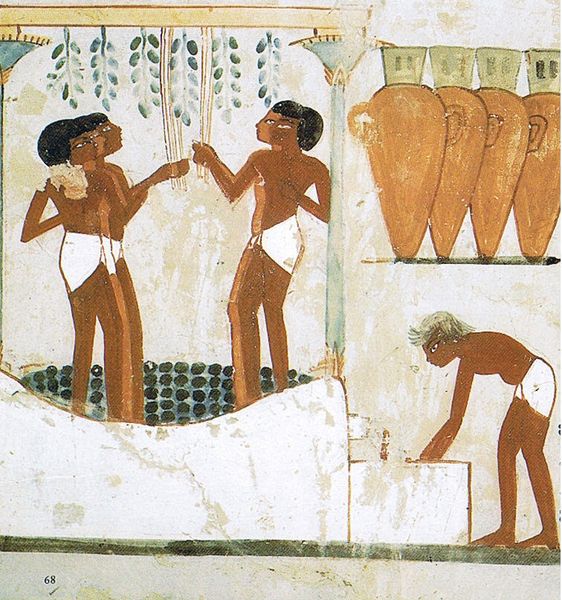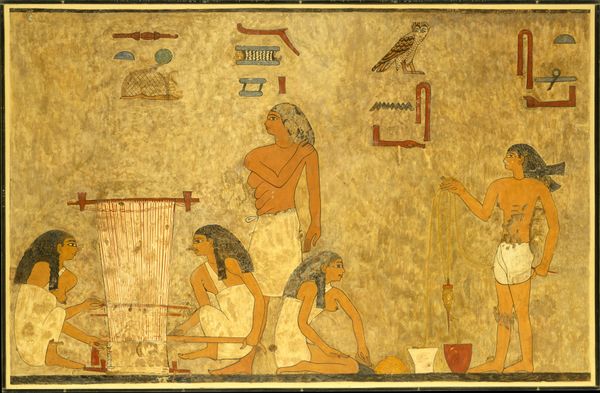
fresco, mural
#
portrait
#
ancient-egyptian-art
#
figuration
#
mural art
#
fresco
#
ancient-mediterranean
#
line
#
history-painting
#
mural
#
mixed media
#
watercolor
#
realism
Copyright: Public domain
Curator: It makes me think of quiet afternoons, almost unbearably poignant. The 'Blinder Musiker,' dating back to around 1390 BC, offers such an intimate glimpse into a life from so long ago. Editor: What jumps out at me is how elegantly material production intersects with artistry in this piece. We see it primarily as a fresco mural, where ground pigments mixed with water are applied to wet plaster—a process dictating both color choices and working speed. Curator: Exactly, there’s a fragility in it, a directness of emotion almost like looking through someone else’s old photo album. The artist captures that moment between notes; it feels less about grandeur and more about a lived reality. It is as though we are in the scene with the subject and his companion. Editor: That perceived 'fragility', I reckon, comes down to understanding the labor—how many hands might have mixed that plaster, mined the minerals for the paints, and built the very tomb wall this graces? Think about the social organization needed. What the piece signifies ideologically or in service to Egyptian dynastic power cannot be overlooked either. Curator: I see it differently, it's not solely about 'power,' to me it reflects human experience—loss, perhaps, or simply the pleasure in creating music. Editor: Well, pleasure had an economy. Who has access to create, appreciate, commission – or have their stories told through frescoes like these? Consumption practices dictate material availability and, by extension, influence aesthetic choices! Curator: Yet the detail! The way his fingers are rendered, or the lady beside him! It's an expression of intimate connection. To boil this down to raw "consumption" seems cold to me. The creation may reflect something about consumption, and it also says something about existence! Editor: But even existence has materiality. Take, for example, his instrument's materiality — considering it could have originated, as materials often did, from distant trade. These factors affected sound, production costs, accessibility... So a whole system informs every stroke! Curator: I suppose art is this funny thing—a dance between human intent and social circumstances. The dialogue it presents can keep revealing something with each interaction and each observation! Editor: Absolutely—analyzing those complex links and what drives artistic material production keeps artwork narratives dynamic, relevant to discussions on modern craft and economics, beyond static descriptions.
Comments
No comments
Be the first to comment and join the conversation on the ultimate creative platform.
